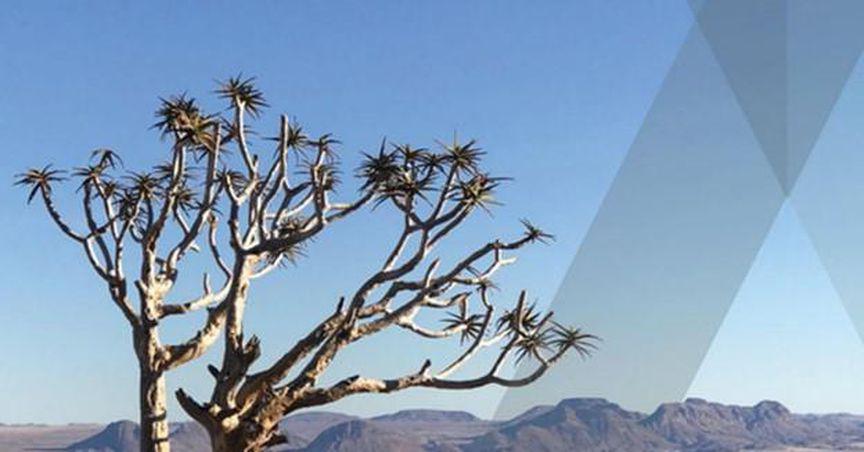Highlights:
- Arcadia is commencing drilling to intersect significant mineralisation at the Karibib Copper-Gold Project in Namibia based on the impressive grab sample results.
- Previous sampling reported a 20km x 2km metasedimentary structural feature, with mineralisation grades of:
- Average 4.32% Cu/1.49 g/t Au (Highest 28.4% Cu/7.65 g/t Au) in skarn-type, AND
- Average 1.94% Cu/2.06 g/t Au (Highest 5.69% Cu/26.3 g/t Au) in vein-type
- Lithologies will be delineated by drilling nine drill holes with a cumulative depth of 526m by Hammerstein Mining and Drilling (drilling operator).
Arcadia Minerals Limited (ASX:AM7) recently announced the commencement of the 526m (9-hole) Reverse Circulation (RC) Drilling program following previously announced impressive grab sampling program results at the Karibib Copper-Gold Project in Namibia. The drilling program aims to intersect significant mineralisation and help in a better understanding of the geology.

(Source: Company’s ASX Announcement, 29 August 2022)
Based on previously obtained grab sampling results of the 20km x 2km metasedimentary structural feature, the feature possesses geological similarities with the Navachab Mine (5.3MozAu) and other prospects like Osino Resources' Twin Hills prospect, which holds 2.1Moz Au Mineral Resources.
Namibia-focused ASX-listed new-era metals (Lithium, Tantalum, Palladium, Nickel, Copper and Gold) explorer Arcadia Minerals is working to tap the growing battery metals market. It can be seen in the Karibib Copper-Gold project, where the company is commencing a drilling program to delineate mineralised lithologies. The company identified the drilling area based on high-grade sampling results and the extensive mapping of favorable local geological settings.

Diorite-proximal skarn- and vein-type mineralisation was confirmed by previously obtained sampling data from the metasedimentary structural feature. Both types of mineralisation contain economic mineralisation, as reported by Competent Person Dr Johan Hattingh (Director, Creo Design (Pty) Ltd).
Skarn-type mineralisation: An average grade of 4.32% Cu and 1.49 g/t Au have been recorded (Highest: 28.4% for Cu and 7.65 g/t for Au). Along with this, significant Ag mineralisation was also encountered with an average grade of 50.50 g/t Ag (Highest 453 g/t Ag) and up to 1% tungsten.
Vein-type mineralisation: An average grade of 1.94% Cu, 2.06 g/t Au (Highest: 5.69% Cu/26.3 g/t Au) and 12.68 g/t for Ag (highest 30.10 g/t Ag) have been recorded.
Details of the Drilling Program:
Some of the critical plans and objectives of the drilling program are:
- It would consist of 9 drill holes drilled at a 60-degree inclination and varied azimuths.
- The identification of drill targets took place to test various lithologies and associated mineralisation.
- Variation in depths and azimuths is a function of inferred geometry and the geology of the targeted zone.
- The possibility of drilling three additional holes also exists based on whether visual mineralisation is encountered in drill holes.
- Anticipated lithologies that drill holes are to intersect are as follows:
- Dolomitic marble
- Varied granitic intrusions containing the endo-skarn alteration of copper
- Cross-cutting quartz veins in Schists with possible gold mineralisation
- alternating calc-silicate and marble units
- Exoskarn alteration with copper, silver, and tungsten mineralisation.
- The highly stressed calc-silicate zone within the alternating zone is expected to contain similar mineralisation but at higher grades.



